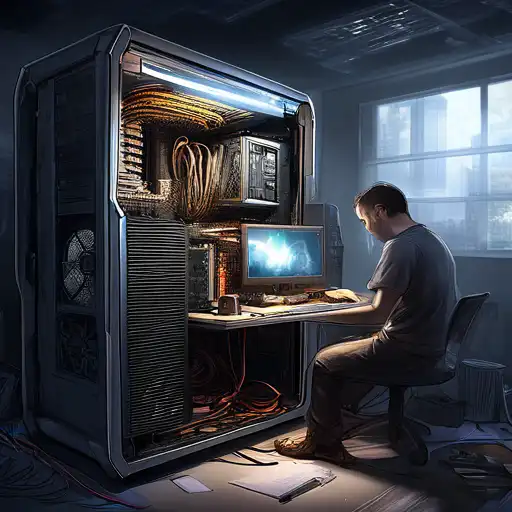Introduction to PC Building
Building your own PC can be a rewarding experience, offering both personal satisfaction and the opportunity to create a machine that perfectly fits your needs. Whether you're a gamer, a content creator, or just someone who appreciates the value of a custom-built computer, this guide will walk you through the process step by step.
Why Build Your Own PC?
There are several advantages to building your own PC, including cost savings, the ability to customize every component, and the satisfaction of assembling something with your own hands. Plus, you'll gain a deeper understanding of how computers work.
Essential Components for Your PC
Before you start, you'll need to gather all the necessary components. Here's a list of the essential parts:
- Processor (CPU)
- Motherboard
- Memory (RAM)
- Storage (SSD or HDD)
- Graphics Card (GPU)
- Power Supply Unit (PSU)
- Case
- Cooling System
Step-by-Step Guide to Building Your PC
1. Prepare Your Workspace
Ensure you have a clean, static-free area to work in. Gather all your tools and components before you begin.
2. Install the CPU
Carefully place the CPU into the motherboard's socket, ensuring it's correctly aligned. Apply thermal paste if it's not pre-applied to your cooler.
3. Install the RAM
Insert the RAM sticks into the appropriate slots on the motherboard. Make sure they're firmly seated and the clips lock into place.
4. Mount the Motherboard
Secure the motherboard inside the case using the provided screws. Ensure all the ports align correctly with the case's I/O shield.
5. Install the Storage and GPU
Connect your SSD or HDD to the motherboard and power supply. Then, insert the graphics card into the PCIe slot on the motherboard.
6. Connect the Power Supply
Attach the PSU to the motherboard, GPU, and storage devices. Make sure all connections are secure.
7. Final Checks and Boot Up
Double-check all connections, then power on your PC. If everything is connected correctly, you should see the BIOS screen.
Tips for First-Time Builders
Building a PC can seem daunting, but with patience and attention to detail, anyone can do it. Here are a few tips to help you along the way:
- Watch tutorial videos if you're unsure about any step.
- Keep your components' manuals handy for reference.
- Don't force any components into place; they should fit smoothly.
- Consider cable management for better airflow and aesthetics.
Conclusion
Building your own PC is an exciting project that can save you money and give you a custom machine tailored to your needs. By following this guide, you'll be well on your way to becoming a confident PC builder. Remember, the key to success is patience and attention to detail.
For more information on choosing the right components, check out our Guide to Choosing PC Components.
